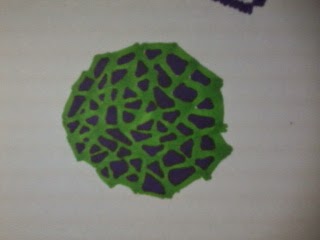Task 2
DADA
Dada was, officially, not a movement, its artists not artists and its art not art. That sounds easy enough, doesn't it? Of course, there is a bit more to the story of Dadaism than this simplistic explanation.
Dada was a literary and artistic movement born in Europe at a time when the horror of World War I was being played out in what amounted to citizens' front yards. Due to the war, a number of artists, writers and intellectuals -- notably of French and German nationality -- found themselves congregating in the refuge that Zurich (in neutral Switzerland) offered. Far from merely feeling relief at their respective escapes, this bunch was pretty ticked off that modern European society would allow the war to have happened. They were so angry, in fact, that they undertook the time-honored artistic tradition of protesting.
Banding together in a loosely-knit group, these writers and artists used any public forum they could find to (metaphorically) spit on nationalism, rationalism, materialism and any other -ism which they felt had contributed to a senseless war. In other words, the Dadaists were fed up. If society is going in this direction, they said, we'll have no part of it or its traditions. Including... no, wait!... especially artistic traditions. We, who are non-artists, will create non-art -- since art (and everything else in the world) has no meaning, anyway.
About the only thing these non-artists all had in common were their ideals. They even had a hard time agreeing on a name for their project. "Dada" - which some say means "hobby horse" in French and others feel is just baby talk -- was the catch-phrase that made the least amount of sense, so "Dada" it was.
Using an early form of Shock Art, the Dadaists thrust mild obscenities, scatological humor, visual puns and everyday objects (renamed as "art") into the public eye. Marcel Duchamp performed the most notable outrages by painting a mustache on a copy of the Mona Lisa (and scribbling an obscenity beneath) and proudly displaying his sculpture entitled Fountain (which was actually a urinal, sans plumbing, to which he added a fake signature).
The public, of course, was revulsed -- which the Dadaists found wildly encouraging. Enthusiasm being contagious, the (non)movement spread from Zurich to other parts of Europe and New York City. And just as mainstream artists were giving it serious consideration, in the early 1920s, Dada (true to form) dissolved itself.
In an interesting twist, this art of protest -- based on a serious underlying principle -- is delightful. The nonsense factor rings true. Dada art is whimsical, colorful, wittily sarcastic and, at times, downright silly. If one wasn't aware that there was, indeed, a rationale behind Dadaism, it would be fun to speculate as to just what these gentlemen were "on" when they created these pieces.
Key Characteristics of Dada Art
- Dada began in Zurich and became an international movement. Or non-movement, as it were.
- Dada had only one rule: Never follow any known rules.
- Dada was intended to provoke an emotional reaction from the viewer (typically shock or outrage). If its art failed to offend traditionalists, Dada writing -- particularly Tristan Tzara's manifestoes -- proved a fine, nose-thumbing Plan B.
- Dada art is nonsensical to the point of whimsy. Almost all of the people who created it were ferociously serious, though.
- Abstraction and Expressionism were the main influences on Dada, followed by Cubism and, to a lesser extent, Futurism.
- There was no predominant medium in Dadaist art. All things from geometric tapestries to glass to plaster and wooden reliefs were fair game. It's worth noting, though, that assemblage, collage, photomontage and the use of ready made objects all gained wide acceptance due to their use in Dada art.
- For something that supposedly meant nothing, Dada certainly created a lot of offshoots. In addition to spawning numerous literary journals, Dada influenced many concurrent trends in the visual arts (especially in the case of Constructivism). The best-known movement Dada was directly responsible for is Surrealism.
- Dada self-destructed when it was in danger of becoming "acceptable".
one of the most famous dada arttist :
Abstract Painting of Marcel Duchamp, 1918, Museum of Modern Art, New York

Marcel Duchamp, was born on July 28th, 1887, near Blainville, France.
Marcel Duchamp is one of the most popular dada artist who exist in the early age of dada when it was found. Most of his arts are successful arts which had reflected positively to the society in France.
Reference:
Shelley,
E. (2013) About.com art history. [Online]
Available from: http://arthistory.about.com/cs/arthistory10one/a/dada.htm
[Accessed 1 August 2014]
Reflection
My understanding and reflect on Dadaisme is:
- an era of design
- an unconscious design
- it is nihilistic
- it has no rules
- its a artistic movement of imaginary
- around the year 1916
- some take it as positive some on the opposite (in certain countries)
Dadaisme does not have a specific topic to/in/for design, its unpredictable, can't be judged, its abstract sometimes or sometimes not at all and etc. Its more on expressing emotions and life situation on what we had gone through and on what we are going through. It is influential artistic movement. What i see in Dada is how people show importance on each and every single issues in our surrounding environment and developing ideas trough imaginations and predictive messages in certain situation.
























